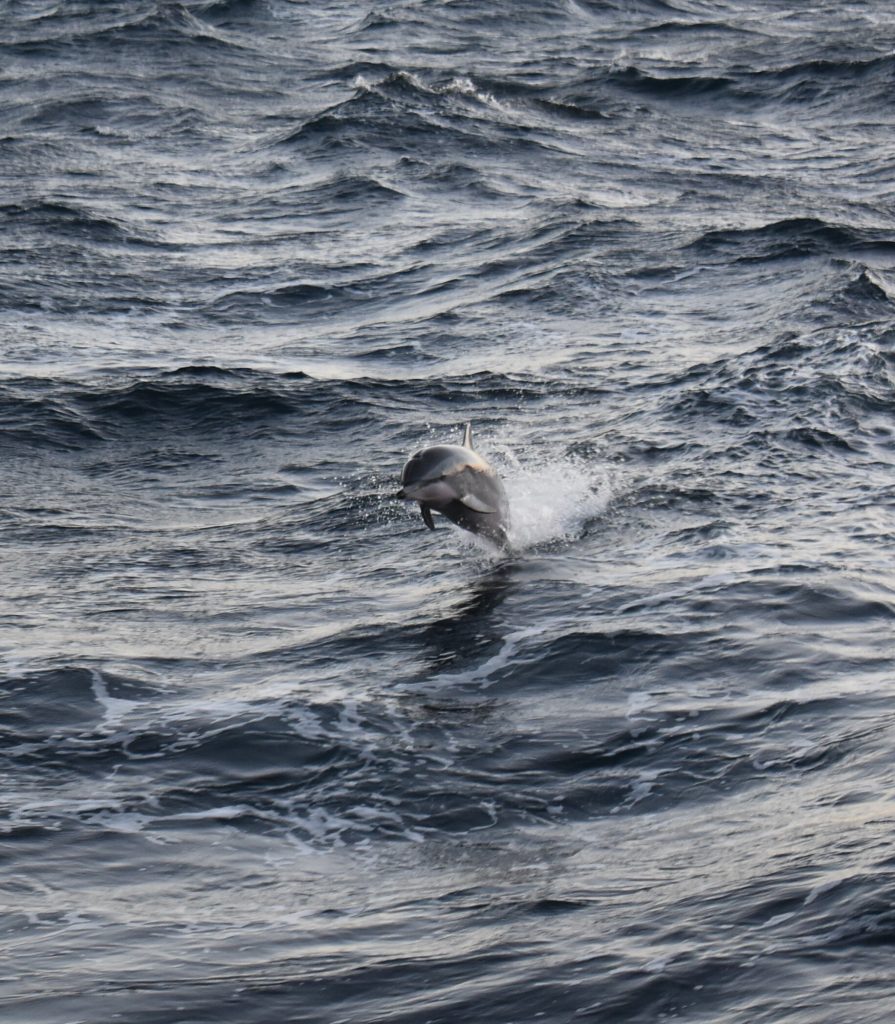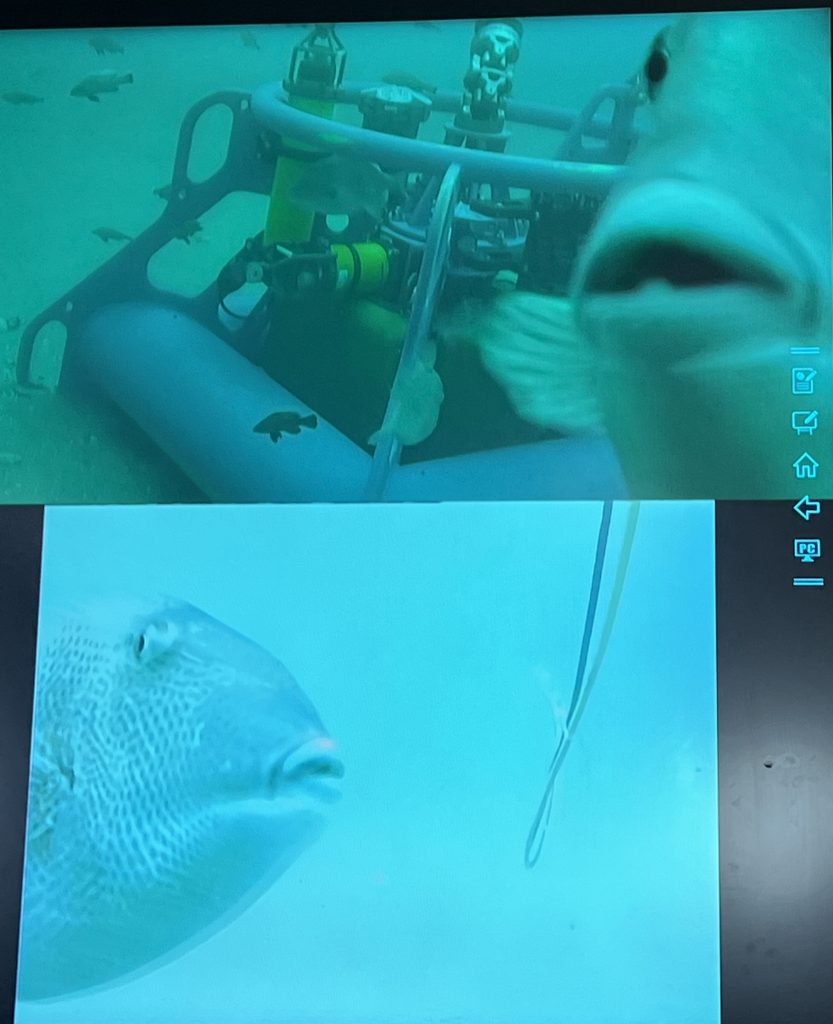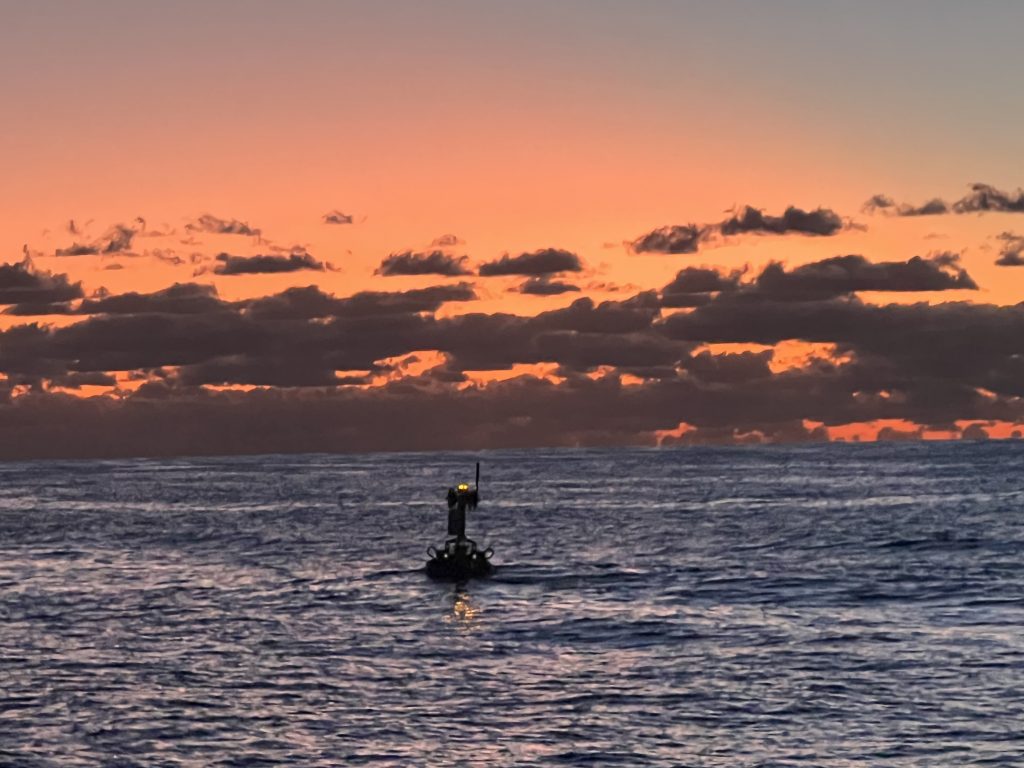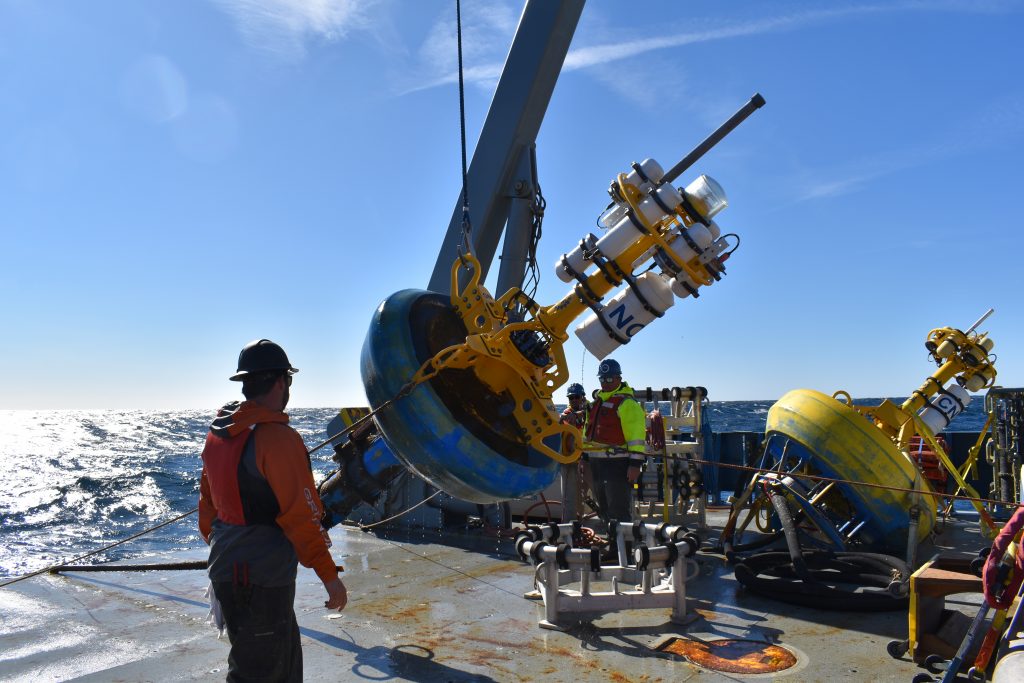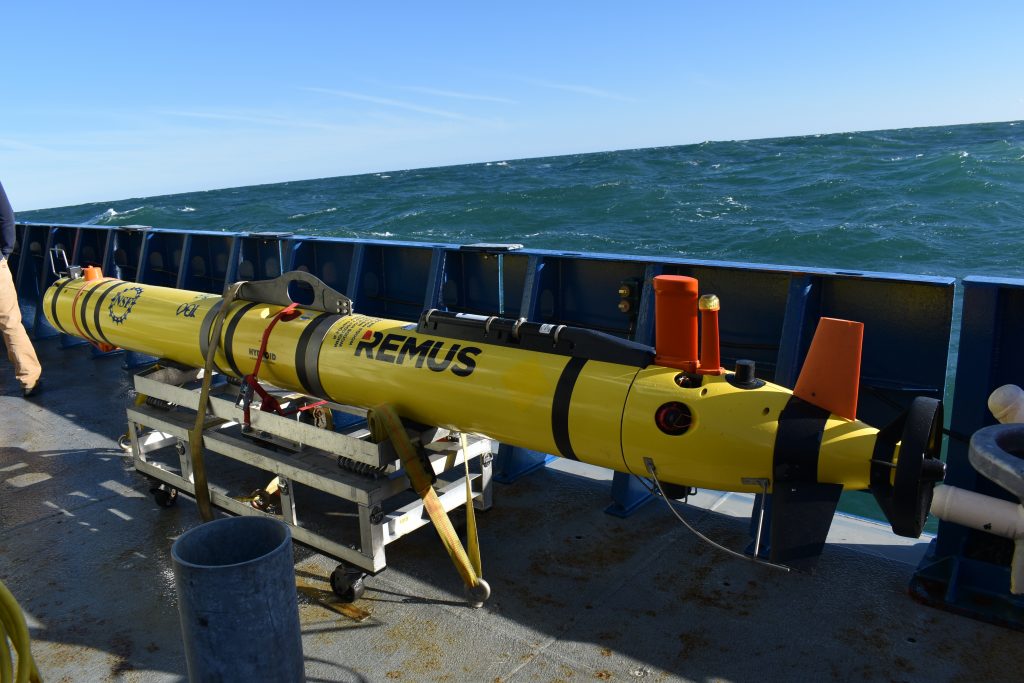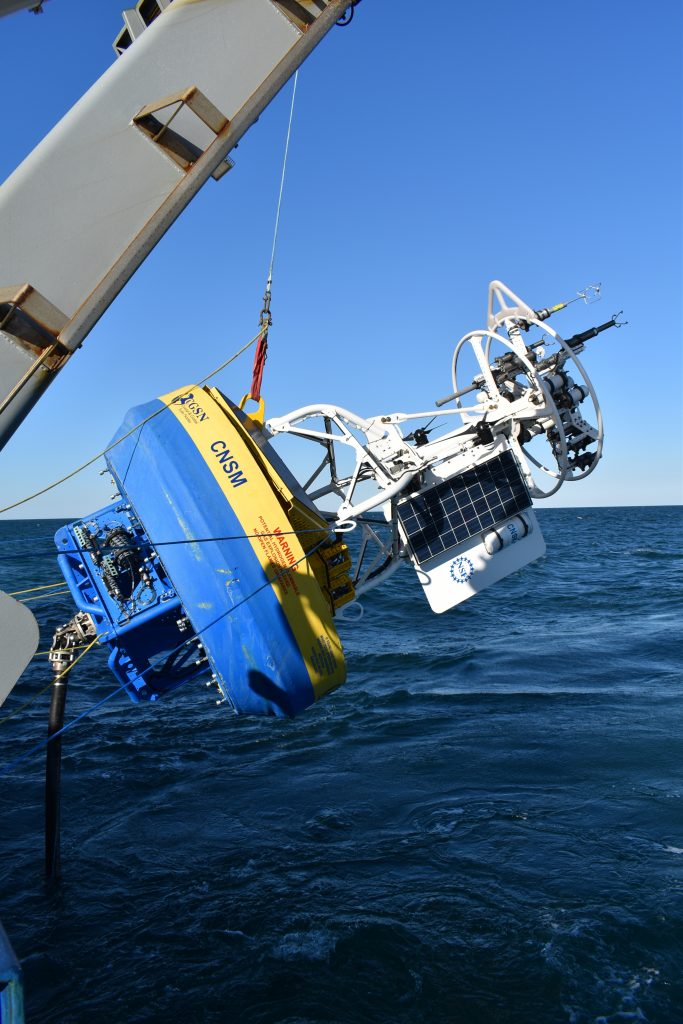Pioneer 22
Dolphins Alongside the Ship
As the cruise headed home, dolphins appeared and held pace alongside the ship, slipping in and out of view with the swell. A fitting finish to the Pioneer 22 transit home.
Read MorePreparing for Water Sampling on Pioneer 22
Water sampling is a key part of each cruise, giving us essential context for the conditions surrounding our deployed sensors. In this photo, Natalia Moore of the Woods Hole Oceanographic Institution (WHOI) prepares the CTD rosette for its next cast, part of the ongoing effort to gather profiles of temperature, salinity, and other seawater properties.…
Read MoreA Curious Visitor During ROV Operations
During the recovery of the Western shallow-water mooring, the ROV was sent down to check on the multi-function node. As we monitored the video feed, it turned out we weren’t the only ones watching – an inquisitive fish paused in front of the camera, giving the ROV a close look before drifting off. A small…
Read MoreSuccessful Field Repair of a Pioneer 22 Prawler
The team completed a successful field repair of a malfunctioning Prawler on the Pioneer 22 cruise. The entire shallow-water mooring was brought on deck, where James Kuo and John Lund of the Woods Hole Oceanographic Institution (WHOI) carried out detailed troubleshooting and on-site repairs to restore the vehicle’s performance. After the work was completed, the…
Read MoreMoments from Pioneer 22
The Pioneer 22 cruise has offered some striking scenes this week. One evening wrapped with a clean sunset over the Atlantic, the horizon fading into calm water. On another day, moorings on deck made a sharp silhouette against a bright moon rising in the background.
Read MoreRecovering the Central Shallow Water Mooring
During the Pioneer 22 cruise, the team successfully recovered the Central Shallow Water Mooring (CNSW). The recovery brought all components safely back on deck, including the surface buoy, the Prawler profiling vehicle, and the Multi-Function Node (MFN). These photos show the full system after months at sea – each part critical to collecting high-quality coastal…
Read MoreCoastal Profiler Mooring Operations
The team carried out both deployment and recovery operations for the Northern Profiler Mooring (NOPM) during the Pioneer 22 cruise. These moorings play a key role in capturing detailed vertical profiles of the water column, helping to track changing ocean conditions over time. The photos highlight the careful coordination and teamwork involved in handling large,…
Read MoreDeploying AUVs
Each deployment is a coordinated effort between ship and science teams to ensure the Autonomous Undersea Vehicles (AUVs) launch safely and smoothly. From careful deck prep to precise release into the water, every step is timed with sea and weather conditions in mind. These images capture the process at work during the Pioneer 22 cruise,…
Read MoreAutonomous Vehicles: Expanding the Reach of Ocean Observations
Autonomous vehicles are an important component of OOI, extending the reach of fixed observing platforms and providing essential spatial context for ocean data. At the Pioneer Array, gliders operate almost continuously, each with an endurance of about 90 days. These vehicles follow planned sampling lines, moving through the water to connect the fixed mooring sites…
Read MoreA Complete Refresh: Central Surface Mooring Deployment with New Wave Energy Technology
As part of the Pioneer Fall Turn cruise, the team successfully deployed a new Central Surface Mooring at the Pioneer Array – bringing with it both a complete system refresh and an exciting technological addition. This latest deployment includes a prototype Wave Energy Converter (WEC), developed by Sandia National Laboratories in collaboration with the U.S.…
Read More